Williamsburg, once the seat of colonial power in Virginia, holds a trove of secrets waiting to be uncovered. Behind the quaint facades and cobblestone streets, the city’s history is woven with tales of intrigue, revolution, and social dynamics. From the lavish affairs at the Governor’s Palace to the bustling activity in Market Square, each corner of this historic town has a story to tell. What mysteries lie hidden in the architectural gems and the intersections of faith, race, and trade? Unravel the captivating narratives that have shaped Williamsburg’s enduring legacy.
Key Points
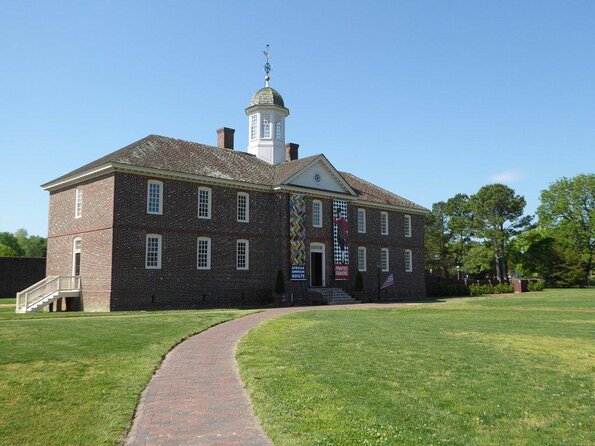
- Beneath the opulent exterior of the Governor’s Palace lies a history of political intrigue and social stratification in colonial Virginia.
- The bustling Market Square concealed a complex system of colonial justice, where the stocks and pillory served as public spectacles.
- Architectural marvels like the Bruton Parish Church and the Capitol Building harbored ideological debates that shaped the religious and political landscape.
- The Gunpowder Incident of 1775 revealed the simmering tensions between the colonial government and the growing revolutionary movement in Williamsburg.
- Williamsburg’s strategic location and its role as a hub of legislative and war effort debates made it a crucial player in the American Revolution.
The Storied Governor’s Palace

What stories lie within the walls of the Governor’s Palace? This grand Georgian-style mansion was once the luxurious residence of colonial Virginia‘s royal governors.
Visitors can explore the lavish rooms and imagine the social and political intrigues that unfolded here. The palace ballroom hosted extravagant parties, while the council chamber saw heated debates over the colony’s governance.
Outside, the manicured gardens reflect the ostentatious lifestyle of the colonial elite.
Today, costumed interpreters bring the palace’s history to life, sharing captivating tales of power, privilege, and the stirrings of revolution that would soon sweep through Williamsburg.
You can also read our reviews of more tours and experiences in Williamsburg.
Uncovering Market Square’s Past
Just steps away from the grandeur of the Governor’s Palace lies the bustling heart of Colonial Williamsburg – Market Square.
This lively marketplace was the commercial and social center of the colonial capital. Merchants peddled their wares, craftsmen showcased their skills, and locals gathered to exchange news and gossip.
Landmarks like the old courthouse, stocks, and pillory still dot the square, reminding visitors of the square’s role in colonial justice and community life.
Today, costumed interpreters bring the past to life, offering a glimpse into the daily rhythms of 18th-century Williamsburg.
Architectural Gems of Williamsburg
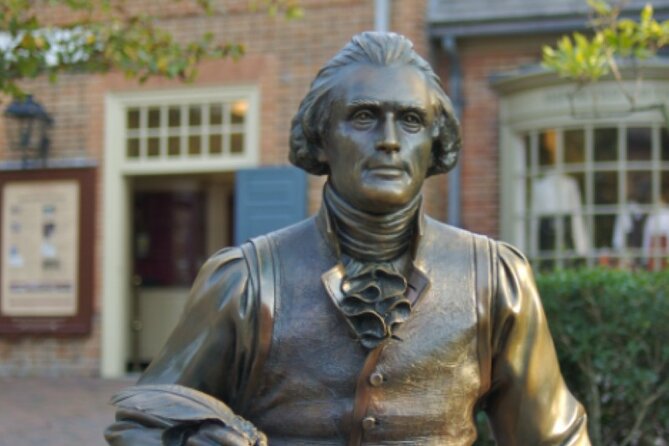
Although Colonial Williamsburg is renowned for its historical significance, the town’s architectural splendor is equally captivating.
Strolling down Palace Green, visitors are struck by the imposing grandeur of the Governor’s Palace, with its symmetrical design and distinctive cupola.
Just steps away, the Courthouse, with its iconic clock tower, stands as a testament to the town’s civic heritage.
Further along, the Bruton Parish Church, with its delicate spire and meticulously preserved interiors, offers a glimpse into Williamsburg’s religious past.
These architectural gems seamlessly blend the past and present, creating a captivating tapestry of history and design.
- Governor’s Palace: Imposing grandeur with symmetrical design and distinctive cupola.
- Courthouse: Iconic clock tower representing Williamsburg’s civic heritage.
- Bruton Parish Church: Delicate spire and meticulously preserved interiors reflecting the town’s religious past.
Colonial Religion and Its Influence
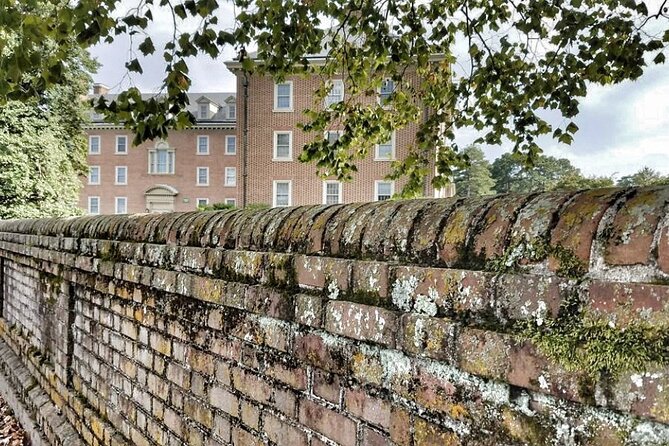
Alongside Williamsburg’s architectural gems, the town’s religious heritage played a pivotal role in shaping its colonial identity.
The Bruton Parish Church, dating back to 1715, stood as a hub of spiritual life. Its sermons and services attracted local gentry and common folk alike, fostering a sense of community.
Strict Anglicanism prevailed, but dissident Quakers and Baptists also found a foothold. Religious tensions simmered, yet the shared devotion to faith unified the diverse population.
Williamsburg’s churches reflected the era’s ideological debates, underscoring how religion permeated every aspect of colonial life. This spiritual legacy continues to captivate visitors today.
Life in the 18th Century Trades
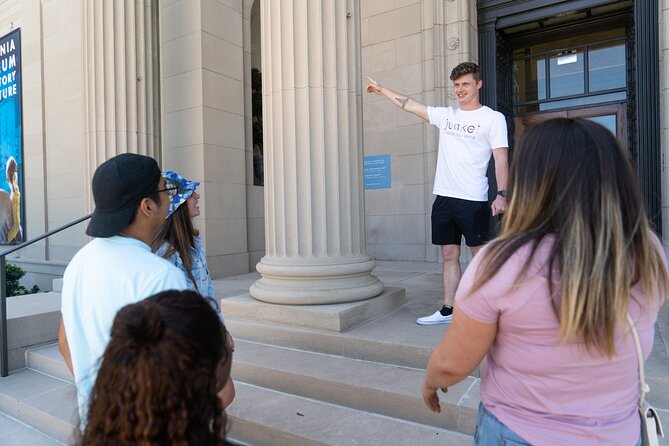
Williamsburg’s 18th century trades were the bedrock of the colonial economy, shaping the daily lives of its residents.
Blacksmiths, carpenters, and silversmiths were essential workers, providing the community with necessary goods and services.
For instance:
-
Blacksmiths forged horseshoes, tools, and hardware, their workshops echoing with the rhythmic clang of hammer on steel.
-
Carpenters built furniture, houses, and ships, their skilled hands shaping wood into functional works of art.
-
Silversmiths crafted elegant tableware and personal items, their delicate craftsmanship reflecting the affluence of Williamsburg’s elite.
These tradespeople were the heartbeat of the colonial town, their labors sustaining the community.
- The Original Ghosts of Williamsburg Tour
- Jamestown Settlement American Revolution Museum 7-Day Ticket
- Colonial Ghosts Tour By US Ghost Adventures
- Exclusive Private Tour of Colonial Williamsburg and the College
- Colonial History Tour in Williamsburg Virginia
- Ultimate Pirate Walking Tour in Colonial Williamsburg
Intersections of Race and Slavery
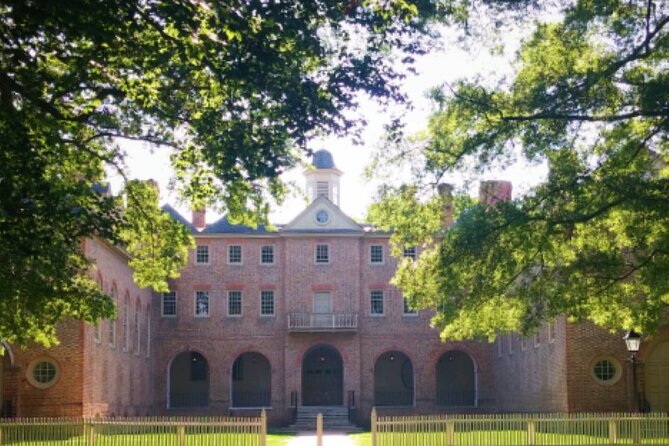
Slavery was an inescapable part of Williamsburg’s colonial history, intertwined with the lives of both the privileged and the marginalized. Enslaved Africans toiled in the fields and households of the elite, while free and enslaved Black people navigated the complexities of a deeply stratified society.
Racial hierarchies shaped everyday life, from who could access public spaces to who held positions of power. Yet, pockets of resistance emerged, as some enslaved individuals sought to assert their humanity and agency in the face of oppression.
Exploring these intersections of race and slavery offers a nuanced understanding of Williamsburg’s past.
Williamsburg’s Revolutionary Role
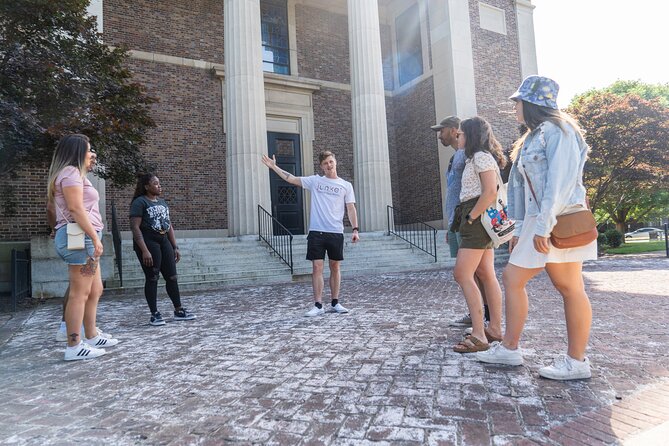
As a central hub of the American Revolution, Williamsburg played a pivotal role in the colonies’ fight for independence.
The Virginia capital saw crucial events unfold, including:
-
The Gunpowder Incident in 1775, where Patrick Henry led a militia to seize the governor’s gunpowder, sparking unrest.
-
The Virginia Convention’s vote for independence in 1776, a crucial step towards the signing of the Declaration of Independence.
-
The construction of the first public building dedicated to legislative assemblies, the Capitol Building, which hosted debates and plans for the war effort.
Williamsburg’s strategic location and political significance made it a hotbed of revolutionary activity, cementing its place in history.
Legends and Lore of the Historic City
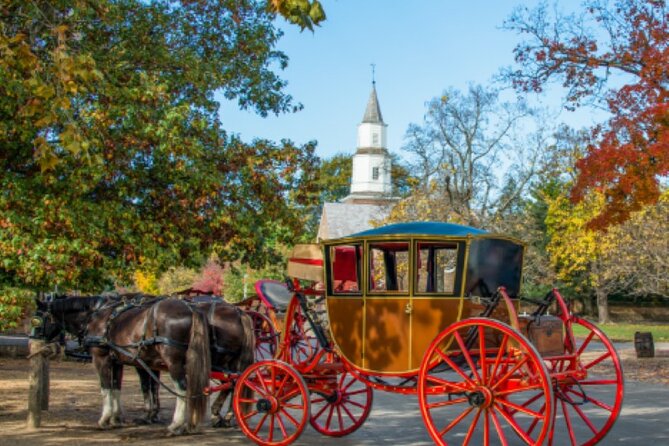
What secrets lie hidden within the historic streets of Williamsburg?
Tales of the supernatural abound in this colonial town. Visitors report unexplained footsteps, ghostly voices, and shadowy figures at the Governor’s Palace and other notable sites.
Legends tell of a Headless Horseman roaming the grounds, and unexplained phenomena at the Margaret Hunter Shop.
Skilled guides share these captivating stories, transporting guests back in time.
From chilling encounters to unexplained mysteries, Williamsburg’s lore captivates those seeking a deeper connection to the past.
Whether true or not, these legends add to the town’s rich history and enchanting atmosphere.
Frequently Asked Questions
What Is the Dress Code for the Tour?
The tour doesn’t have a specific dress code, but it’s recommended to wear comfortable walking shoes and dress for the weather. The guides wear Colonial Ghosts t-shirts for easy identification during the tour.
Can I Bring My Own Food and Drinks?
Travelers are welcome to bring their own food and drinks on the Colonial Williamsburg tour. However, there are no plans for a scheduled meal break, so participants should plan accordingly if they wish to consume their own provisions during the tour.
Are Photography and Videography Allowed During the Tour?
Photography and videography are allowed during the tour. Guests are encouraged to capture the historic landmarks and sights to document their experience. However, out of respect for other travelers, guests should avoid disrupting the tour or blocking others’ views.
How Accessible Is the Tour for Those With Limited Mobility?
The tour is wheelchair and stroller accessible, and service animals are allowed. A moderate fitness level is recommended, but the pace can be adjusted to accommodate guests with limited mobility. Accessibility is a priority for this immersive historical experience.
Can I Purchase Colonial-Era Souvenirs at the End of the Tour?
Yes, you can purchase colonial-era souvenirs at the end of the tour. The tour ends at the Governor’s Palace, where visitors can browse a gift shop stocked with historical replicas and memorabilia to take home as mementos.
Sum Up
Williamsburg’s enduring legacy is a testament to its rich history. From the opulent Governor’s Palace to the bustling Market Square, every facet of the colonial city reveals captivating stories. Its architectural gems, religious influences, and pivotal role in the American Revolution have cemented Williamsburg’s place as a hub of history and intrigue. The secrets of this historic town continue to fascinate and inspire visitors from around the world.
More Tour Reviews in Williamsburg
- Private Tour From Williamsburg to Monticello World Heritage Site
- Williamsburg Family Trek A Journey Through Time and Tales
- Tales of Christmas Past and Present in Williamsburg
- Secret Lives on Colonial Women
- Williamsburg’s Winter Wonderland: A Historic Holiday Stroll
- What Says Virginia: A Question of Independence Review
Not for you? Here's more nearby things to do in Williamsburg we have reviewed
- Private Tour From Williamsburg to Monticello World Heritage Site
- Williamsburg Family Trek A Journey Through Time and Tales
- Tales of Christmas Past and Present in Williamsburg
- Secret Lives on Colonial Women
- Williamsburg’s Winter Wonderland: A Historic Holiday Stroll
- What Says Virginia: A Question of Independence Review
- A Woman’s Place in History Review
- Epic Scavenger Hunt in Williamsburg Review
- Colonial Williamsburg Dead of Night Ghost Hunt With Equipment
- The Reverend and the Millionaire
- Christmas on the Homefront: A 1-Hour World War II Character Tour
- Half-Day Holiday and Tacky Lights Tour Review
